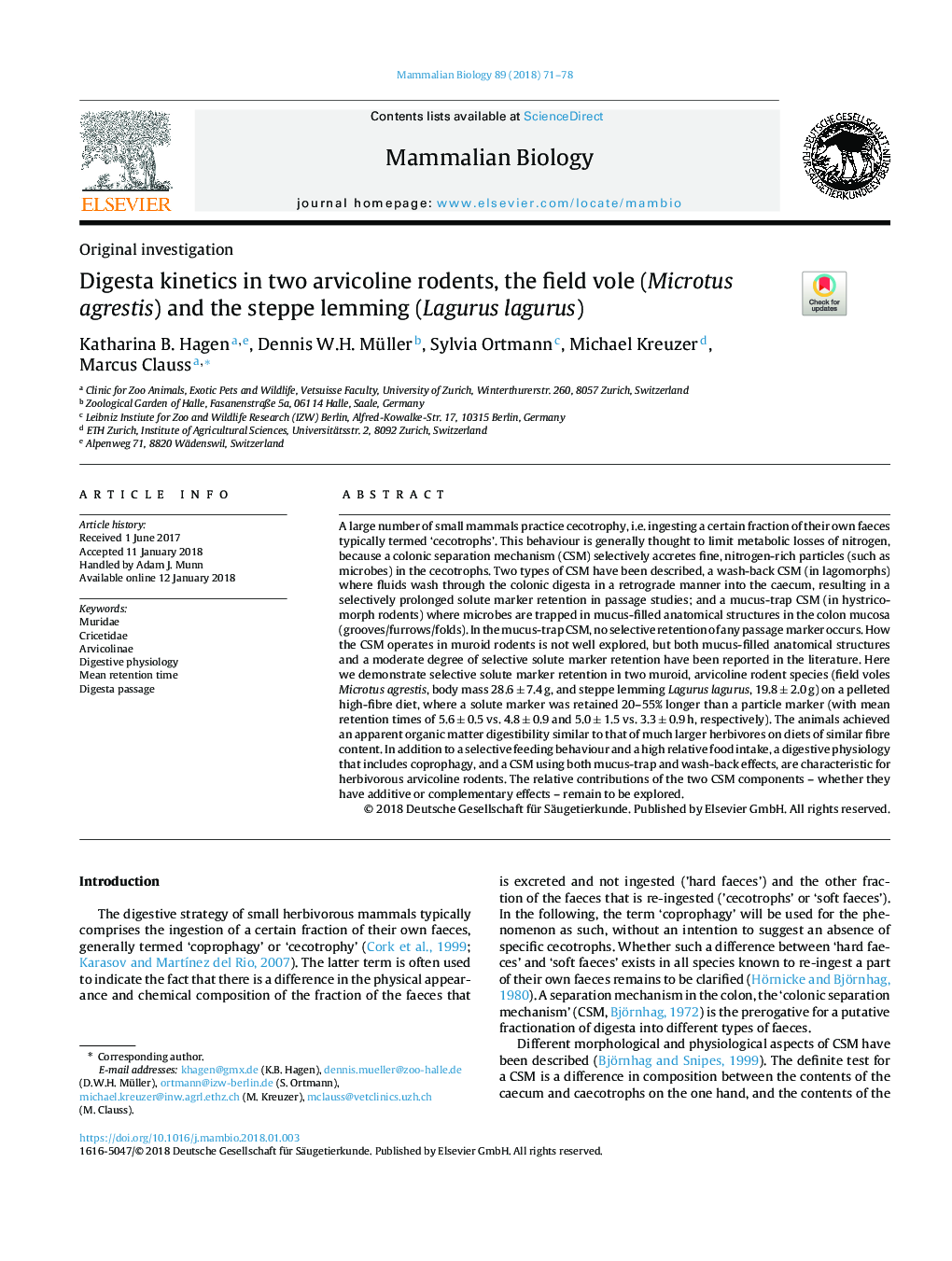| کد مقاله | کد نشریه | سال انتشار | مقاله انگلیسی | نسخه تمام متن |
|---|---|---|---|---|
| 8475693 | 1550458 | 2018 | 8 صفحه PDF | دانلود رایگان |
عنوان انگلیسی مقاله ISI
Digesta kinetics in two arvicoline rodents, the field vole (Microtus agrestis) and the steppe lemming (Lagurus lagurus)
دانلود مقاله + سفارش ترجمه
دانلود مقاله ISI انگلیسی
رایگان برای ایرانیان
کلمات کلیدی
موضوعات مرتبط
علوم زیستی و بیوفناوری
علوم کشاورزی و بیولوژیک
علوم دامی و جانورشناسی
پیش نمایش صفحه اول مقاله

چکیده انگلیسی
A large number of small mammals practice cecotrophy, i.e. ingesting a certain fraction of their own faeces typically termed 'cecotrophs'. This behaviour is generally thought to limit metabolic losses of nitrogen, because a colonic separation mechanism (CSM) selectively accretes fine, nitrogen-rich particles (such as microbes) in the cecotrophs. Two types of CSM have been described, a wash-back CSM (in lagomorphs) where fluids wash through the colonic digesta in a retrograde manner into the caecum, resulting in a selectively prolonged solute marker retention in passage studies; and a mucus-trap CSM (in hystricomorph rodents) where microbes are trapped in mucus-filled anatomical structures in the colon mucosa (grooves/furrows/folds). In the mucus-trap CSM, no selective retention of any passage marker occurs. How the CSM operates in muroid rodents is not well explored, but both mucus-filled anatomical structures and a moderate degree of selective solute marker retention have been reported in the literature. Here we demonstrate selective solute marker retention in two muroid, arvicoline rodent species (field voles Microtus agrestis, body mass 28.6â¯Â±â¯7.4â¯g, and steppe lemming Lagurus lagurus, 19.8â¯Â±â¯2.0â¯g) on a pelleted high-fibre diet, where a solute marker was retained 20-55% longer than a particle marker (with mean retention times of 5.6â¯Â±â¯0.5 vs. 4.8â¯Â±â¯0.9 and 5.0â¯Â±â¯1.5 vs. 3.3â¯Â±â¯0.9â¯h, respectively). The animals achieved an apparent organic matter digestibility similar to that of much larger herbivores on diets of similar fibre content. In addition to a selective feeding behaviour and a high relative food intake, a digestive physiology that includes coprophagy, and a CSM using both mucus-trap and wash-back effects, are characteristic for herbivorous arvicoline rodents. The relative contributions of the two CSM components - whether they have additive or complementary effects - remain to be explored.
ناشر
Database: Elsevier - ScienceDirect (ساینس دایرکت)
Journal: Mammalian Biology - Volume 89, March 2018, Pages 71-78
Journal: Mammalian Biology - Volume 89, March 2018, Pages 71-78
نویسندگان
Katharina B. Hagen, Dennis W.H. Müller, Sylvia Ortmann, Michael Kreuzer, Marcus Clauss,